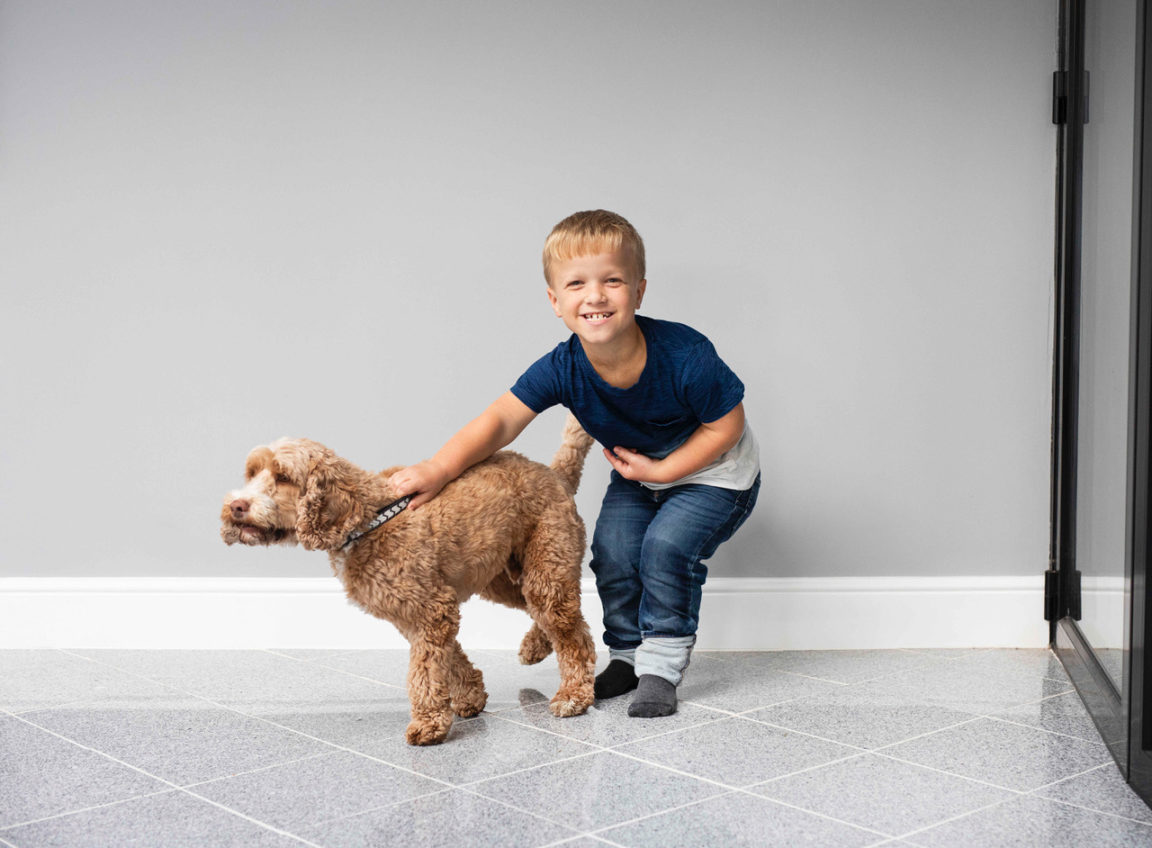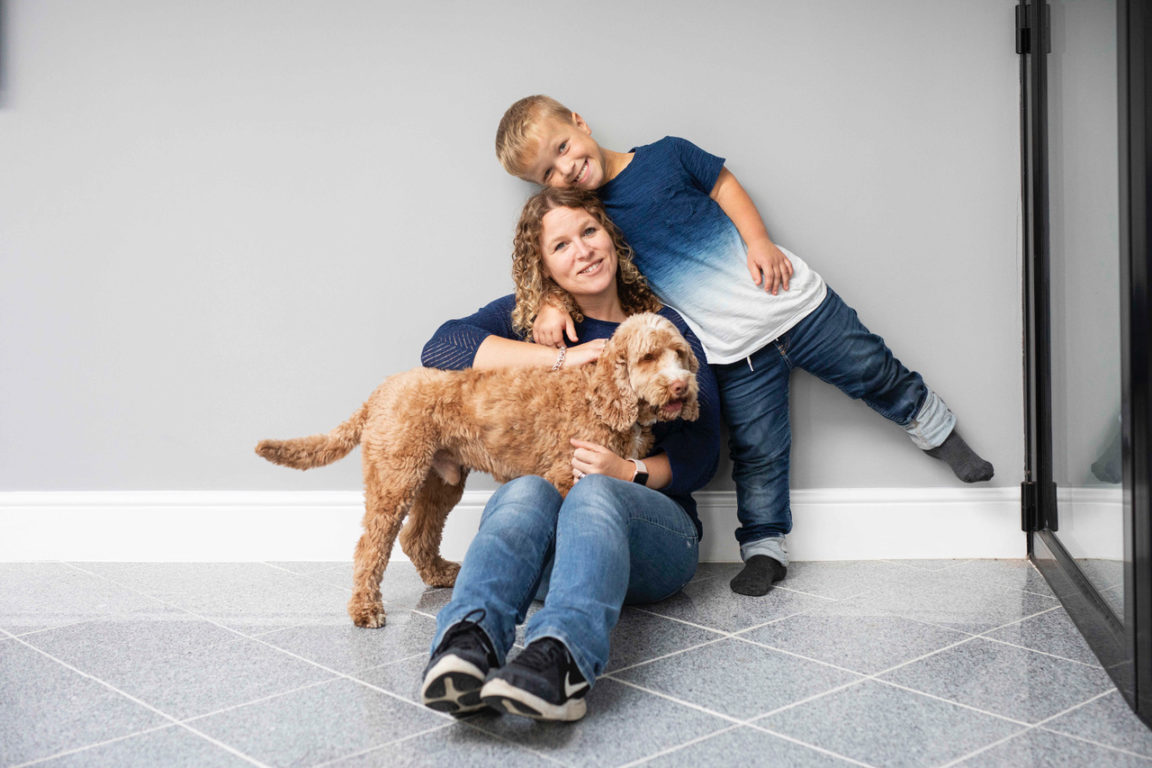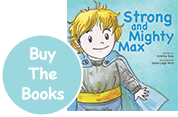DWARFISM AWARENESS MONTH
October is dwarfism awareness month. That time of year when people within the dwarfism community seek to educate their friends and community-mainly through online media posts. The picture below is my son, Samuel, and his dog Hamish. You may have spotted Hamish in edition two of Strong and Mighty Max.

OUR STORY
Nine years ago I learnt a new word in my vocabulary. My knowledge of dwarfism prior to my son being born was virtually nil. I had never even heard of the word achondroplaisa, the most common form of dwarfism. How quickly that word became familiar and part of my vocabulary as I sought to learn as much as possible about my son’s medical condition.
I have loved Samuel from the moment he was conceived. He has restricted growth in his arms and legs. Apart from that physical difference he is like any other nine year old child. He does of course stand out in the crowd amongst his peers because of his restricted growth. People can react to his difference by staring and pointing and sometimes questioning his age. Samuel can share better than I can about the challenges he faces. Perhaps his biggest challenge is other people’s ignorance or thoughtlessness in the way they can sometimes relate to him. I am reminded all the time why I wrote Strong and Mighty Max, once people understand more about his condition people are generally very accepting and kind.
MEDICAL COMPLICATIONS
I often under play the medical challenges people with achondroplasia face, not because I am in denial, but because our life experience so far has been without complication. However some children with dwarfism face physical complications which impact mobility, including bowing of legs, spinal stenosis and fluid on the brain. Respiratory complications, sleep apnoea can also be problematic for children born with achondroplasia. Some children have experienced multiple operations by the time they are nine years old. Thankfully that has not been the case for my son.
In adulthood complications can present themselves as people with dwarfism can face further complications. People forget at times that dwarfism is a registered disability. As a family we have never seen our son as disabled, we try not to treat him any differently to his three siblings. We have never focused on the things he can’t do, and have encouraged him that he can do most things if he is willing to give them a try.
MEDICAL RESEARCH
Medical research around dwarfism has been in the news a lot recently as a medical trial which my son is on has recently published their phase three results in the Lancet. This is all very early days but we are hopeful that one day there will be non invasive therapies that can improve the quality of life and health of children impacted by dwarfism. Not all families will choose these therapies and there is some division amongst people within the restricted growth community on this issue. Samuel himself with the support of us as his parents has decided to be part of this research that hopefully one day will benefit his children or grandchildren. We are proud of Samuel’s courage- time will tell how successful this treatment is.
CHOOSE KINDNESS
If there is anything I would like you to learn this month as a take-away for #dwarfismawareness- it is: to treat people with kindness. Respect one another and make the daily choice to be kind with your eyes and the way you speak. Be aware that your words have power to build someone up or bring someone down. Also remember you may never fully understand what it is like to walk in someone else’s shoes. We all have different life experiences which dictate how we see the world, but regardless of those differences we can unite through choosing to be kind.
Any Book orders in the month of October, only through this website will be eligible to Buy one Get One Free

Photo by Fabio De Paola, featured in The Guardian, G2, Monday 28 September 2020.

